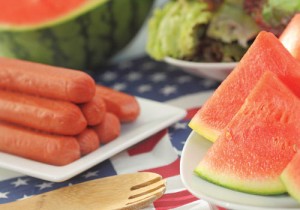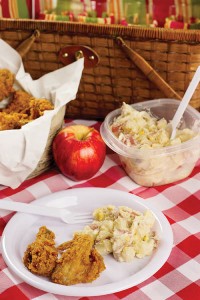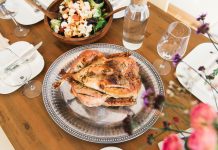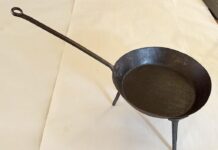Even though bacteria can’t be seen, smelled or tasted, it can grow and rapidly multiply on food in the danger zone between 40 and 140 degrees Fahrenheit, causing food to spoil.
Here are some food safety tips to keep in mind during the hot summer months, whether you’re hosting a get together, going camping or having a picnic at the beach.
Keep food safe while picnicking
- Always use clean hands, utensils and surfaces when preparing and handling foods.
- Use disposable utensils when possible.
- Don’t cross contaminate. Keep utensils and dishes used for uncooked meats separate from dishes and utensils used for cooked and ready-to-eat foods.
- Keep hot food hot (above 140 degrees F)
- This includes seafood, poultry and cooked meats.
- Use an electric hot tray or chafing dish to keep hot dishes hot.
- Keep cold food cold (between 34 and 40 degrees Fahrenheit)
- This includes dishes made with eggs, seafood, meat and poultry.
- Keep foods cold while transporting with an insulated cooler and ice.
- Keep drinks in a cooler separate from food so that the temperature in the food cooler isn’t lowered by constant opening and closing.
- For buffets, only put out food as it’s needed. Store the rest at proper temperatures and replace as needed.
- Don’t add fresh food to food that has been sitting out. Instead, completely replace food that has been sitting out with fresh food.
Meat cooking temperatures
Use a meat thermometer to accurately measure temperatures.
- Ground meat/meat mixtures: 160 degrees F
- Fresh beef, veal, lamb and poultry (steaks, roasts and chops): 145 degrees F (wait 3 minutes before slicing or carving)
- Poultry (chicken, turkey, duck, goose): 165 degrees F
- Fresh pork and ham: 145 degrees F (wait 3 minutes before slicing or carving)
- Precooked ham: reheat to 140 degrees F (wait 3 minutes before slicing or carving)
- Fin fish: 145 degrees F, or until flesh is opaque and separates easily with fork
- Shrimp, lobster, crabs: Cook until pearly and opaque
- Clams, oysters, mussels, scallops: Cook until flesh is milky white or opaque and firm
Proper food storage
Storing food in the refrigerator slows the contamination process, but it doesn’t stop it. The total amount of time that food should be left at room temperature is 4 hours, including preparation, storage and serving time.
Determine how much refrigerator space you need to store foods prior to eating. That way, nothing will be wasted or thrown out.
While putting warm foods in the refrigerator is safe, storing too many hot foods can bring down your fridge’s temperature, causing foods to spoil. Overcrowding your fridge can lead to spoilage, too, because air won’t be able to properly circulate, causing foods to become warm.
Only keep prepared foods in the refrigerator for up to two days before serving. Keep leftovers for up to two days in the refrigerator. Consider freezing to keep leftovers longer.
Sources: Clemson Cooperative Extension, Michigan State University Extension, University of Nebraska-Lincoln Extension



















